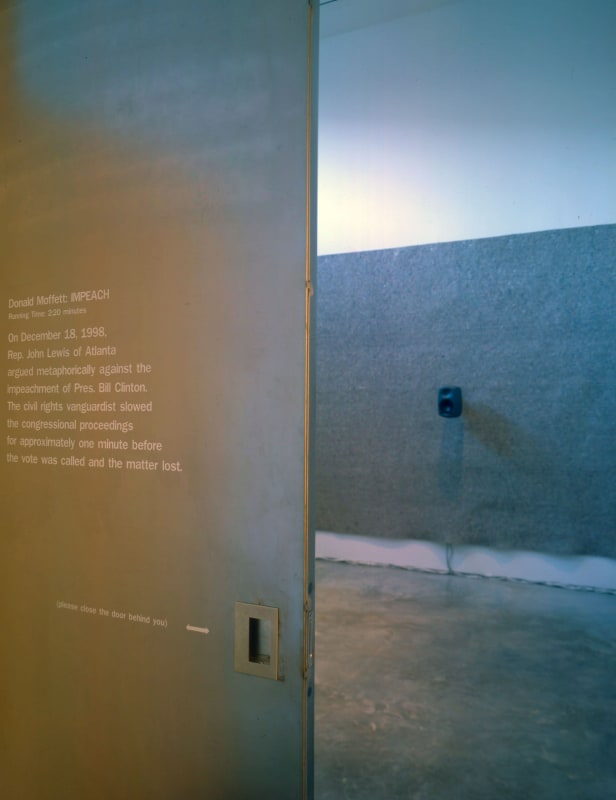BY HARRY KOLLATZ JR.
What sounds at first like a low, ominous rumble and wind picking up announcing the burst of a storm is instead the ambient noise in the U.S. House of Representatives on Dec. 19, 1998, amplified through multiple channels. The moment comes amid the debates for voting on a resolution of impeachment against President Bill Clinton. What follows is a dramatic 2-minute, 20-second sound piece called "Impeach," created in 2006 by artist Donald Moffett.
The Virginia Museum of Fine Arts has installed the sound work into the 1887 Confederate Memorial Chapel on its grounds. Prolific Richmond architect and Confederate veteran Marion J Dimmock (1842-1908) designed the Carpenter Gothic chapel. The structure and the recently re-opened and rehabilitated Robinson House on the other side of the VMFA campus are the two remaining buildings from the last residence of Confederate veterans with little means, R.E. Lee Camp, No.1.
The use of the chapel by the VMFA has been a source of contention by Confederate flag supporters who insist that their flag should once again fly outside the chapel. During a 2015 installation called "Problem Piece," which was part of 1708 Gallery’s 2015 InLight exhibition, protesters stood off site, holding their flags in the chill wind, and some visitors thought them part of the show, which, by their proximity, they became.
The Moffett installation is not likely to attract quite the same attention, although it, too, carries a power across levels of understanding. Valerie Cassel Oliver, curator of the museum’s Sydney and Frances Lewis collection of modern and contemporary art, explains how Moffett is using “sound as material, history as material, similar to a 2002 piece with paintings and video, 'What Barbara Jordan Wore.' "
“That concerned the Watergate hearings and the propensity of some observers to have more concern about what [Texas Congresswoman] Barbara Jordan was wearing as opposed to what she was saying,” Oliver says.
The voice that permeates the space and soars into its Gothic arches is that of civil rights icon and Georgia Rep. John Lewis. The congressman is serving his 17th term in the House. (He appeared Sunday night during the Academy Awards).
He is immediately preceded by then-ranking House Judiciary Committee member John Conyers, D-Michigan. This came during the vigorous debate in the House between impeachment or the less onerous censure. (You can watch a C-SPAN clip here.) Conyers ceded time to various speakers prior to Lewis taking the dais. Hearing his impassioned illustrative plea in this space, sounding similar to a minister urging reconciliation, is powerful. He speaks of a great storm lashing the house of his aunt when he was a boy and how the nation needed to hold on together, as a family, to get through this particular political maelstrom.
“It’s the poetics of a house divided in a decisive discussion about impeachment over lying to Congress and a notion of personal infidelity, as opposed to the Watergate hearings," Oliver says. "[Lewis'] speech is a call for reconciliation, and came almost a century after this building was constructed, and built with funds from private individuals, from the North and South, in that spirit of reconciliation.”
"Impeach" will be activated by the chapel attendant when people enter through the summer. The installation is part of the effort to use the chapel, when the appropriate opportunity presents, as an extended gallery of the museum.
While it’s not necessary for the listener in the chapel to know, further layers of history are added to the entire milieu with recognition that allegations of sexual harassment in 2017 forced Conyers from office. The percussive gavel hammered to end Lewis’ time is wielded by Rep. Ray LaHood, R-Illinois, a moderate Republican. He served as President Obama’s secretary of transportation until leaving public life in 2013.


